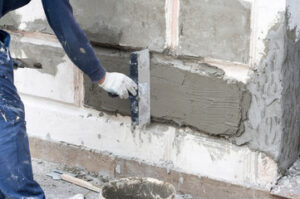Formazione Aziendale is a structured event that focuses on professional development and team building. These events can have many different purposes, including leadership training, communication improvement, and stress management.

The content for a corporate workshop should be tailored to the audience’s needs. This will ensure that the attendees will be engaged throughout the event.
Boosting morale is an important part of running a business. Low morale can result in lost productivity and a negative work environment. To prevent this, it is essential to offer different training and skill-building opportunities for employees. These workshops help employees feel more comfortable and motivated in their jobs, which results in a happier, more productive workforce.
Corporate workshops are often filled with interactive learning activities and group discussions. They also provide participants with valuable resources to take back to the workplace. This ensures that they will be able to implement what they have learned in their day-to-day tasks. The best way to create a positive atmosphere at a workshop is to choose topics that are relevant and engaging for the attendees.
For example, a public speaking workshop can be an invaluable tool for employees who struggle with anxiety when giving presentations. It will teach them techniques for overcoming their nerves and delivering compelling presentations. Similarly, a problem-solving workshop can help employees develop the skills and mindset to tackle difficult challenges.
Another benefit of corporate workshops is that they bring teams closer together. They encourage team members to communicate clearly and support each other, even if they disagree on an issue. They can also help break down barriers between different departments, leading to greater efficiency and a stronger team spirit.
Workshops can also be used to identify potential leaders and showcase their skills. They often involve group activities that allow participants to act as leaders in small groups, or as part of larger projects. This enables them to develop leadership skills, while at the same time demonstrating their potential value to the company. They can also be useful for boosting morale by showing employees that their company values them and believes in their growth.
They bring teams closer
Corporate workshops are a great way to bring teams together and learn new skills. They can boost morale and help employees feel more engaged in their work. Corporate workshops can be in-person or virtual, and can include fun activities to help participants bond with one another. They can also encourage accountability and processing with peers. Event planners should take the time to understand their participants’ long-term goals and interests when organizing a workshop. This will make it easier for them to create compelling content and attract the right audience.
Workshops often involve problem-solving exercises that teach employees how to think critically and creatively. This can help them deal with the challenges of a rapidly changing business environment. In addition, these workshops can help participants develop an adaptive mindset, which can be useful in the workplace.
When planning a corporate workshop, it is important to set clear objectives and measurable outcomes. This will allow organizers to measure the impact of the workshop on participants and help them identify any areas for improvement. Additionally, it is crucial to publicize the workshop and promote its value to participants.
The goal of a corporate workshop is to inspire, motivate, and keep morale high by setting attainable targets. This can be achieved by following a framework that includes SMART (specific, measurable, actionable, relevant and time-bound) goals. This workshop can be delivered by a professional coach or trainer and provides attendees with practical tools to achieve their career aspirations.
Even established teams have more to learn about one another. A team building activity like Coat of Arms is a fun way to get to know your teammates and build a stronger working relationship. It helps members share who they are as individuals and what their unique strengths are, and allows them to connect more easily with one another.
They foster creativity
Corporate workshops can help your employees develop the skills necessary for creativity and innovation. These skills will help them be adaptable to changes and provide a competitive edge in your business. They also improve customer service. The best workshops will have an expert facilitator and include learning objectives, measurable outcomes, and real-world problem-solving exercises. They should also have a flexible design to accommodate different learning styles and cultures.
Creativity workshops are often led by experienced consultants with a track record of success in fostering creativity in the workplace. These professionals understand the challenges that face organizations and will tailor their workshop to your specific needs. They will use innovative tools and methodologies to teach participants how to unlock their creative potential. They will also offer strategies for sustaining these skills over the long term.
Creative workshops are a great way to encourage teamwork and collaboration. They often include ice-breaker activities to build rapport among participants, which can inspire brainstorming sessions and meetings. Additionally, these workshops offer a safe space for experimentation, where mistakes are not frowned upon. For example, a food and beverage company might hold a creative workshop to develop a new packaging solution for its products.
Aside from boosting morale, creativity can boost productivity by improving communication and facilitating better decision-making processes. In addition, it can also help your employees become more resilient in the face of change, as they will be able to adapt to new situations with ease. This can make your employees happier at work, which is a key driver for employee loyalty. This, in turn, can have a positive impact on your bottom line.
They focus on wellness
The goal of corporate wellness workshops is to provide employees with the tools and knowledge they need to improve their health, well-being, and work performance. These workshops can focus on a range of topics, including physical fitness, nutrition, and mental and emotional wellbeing. By focusing on the health of employees, companies can foster a positive workplace environment and increase employee satisfaction.
Employee wellness workshops can be a great way to show your employees that you value their health and wellbeing. They can also boost morale and encourage teamwork. However, it’s important to ensure that the workshops you choose are relevant and engaging for your employees. To do so, you should identify your objectives and audience. You can do this by conducting a needs assessment or survey and analyzing the results.
Wellbeing workshops can also teach your employees healthy coping mechanisms for stress and burnout. These include exercise, meditation, and breathing techniques. They can help them relax and reduce their stress levels, which will increase productivity and overall happiness.
Another popular wellness workshop is Strengths Finder, which helps employees discover their strengths and how they can use them in their careers and personal lives. This type of workshop can be facilitated by a life coach or counselor, and can have lasting impacts on employee well-being.
It is essential that your organization has a well-established program for wellness. It should be a part of the company culture and include onsite fitness facilities and flexible work hours. It should also include a holistic approach that includes dietary changes, stress management techniques, and emotional support for employees. In addition to these changes, your company should create an atmosphere of openness and collaboration. This will ensure that your employees feel comfortable discussing their successes and challenges in implementing wellness strategies.
They help employees manage change
Corporate workshops are an effective tool for helping employees manage change. These structured events provide participants with new skills, knowledge and perspectives on topics that are relevant to their roles, professional development and company goals. They often include presentations, demonstrations and facilitated discussions. The workshop format can vary from one-day sessions to multi-day seminars.
Successful corporate workshops make an impact that goes beyond the workshop schedule. The organizers should understand each employee’s long-term goals and incorporate them into the event program. This will help employees process the learning experience and develop a stronger, more adaptable mindset. In addition, the event planner should encourage accountability and processing with peers to maximize impact.
Corporate workshop programs focus on specific goals for employees, such as improving communication or developing leadership skills. Some workshops are also designed to help employees handle stress and improve their mental health. Some workshops are even led by life coaches who help employees discover their personal purpose and embark on a journey of healing and self-discovery.
In addition to providing training on specific topics, corporate workshops build team spirit and collaboration. They also promote healthy eating habits and encourage physical activity. This helps employees feel more energized, which leads to greater productivity. Corporate workshops can also boost morale by showing that the organization cares about its employees and their well-being. This can lead to lower turnover rates.








